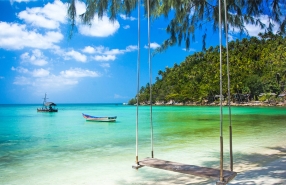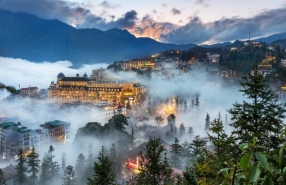When Is The Best Time To Visit Da Nang Vietnam ?

Da Nang sits quietly between the mountains and the sea, a coastal city that changes mood with the seasons. Warm sunlight stretches over its beaches for most of the year, while gentle rains return from late September. The Da Nang weather shapes everything here from the calm mornings by My Khe Beach to the mist over Marble Mountains. According to the Da Nang climate guide, the dry season brings perfect days for exploring and swimming. Choosing the best time to visit Da Nang Vietnam means deciding which version of this lively city feels right to experience.
When is the best time to visit Da Nang Vietnam ?
1. Da Nang weather and climate guide
Between the mountains and the sea, the Da Nang weather changes in a rhythm that locals know well. The city moves between two clear seasons. From February to August, dry winds sweep through, filling the sky with light. Beaches stay bright from morning to evening, and salt hangs in the air. It is the time when Da Nang feels alive: streets open to the sea breeze, and the water glows under steady sunshine.
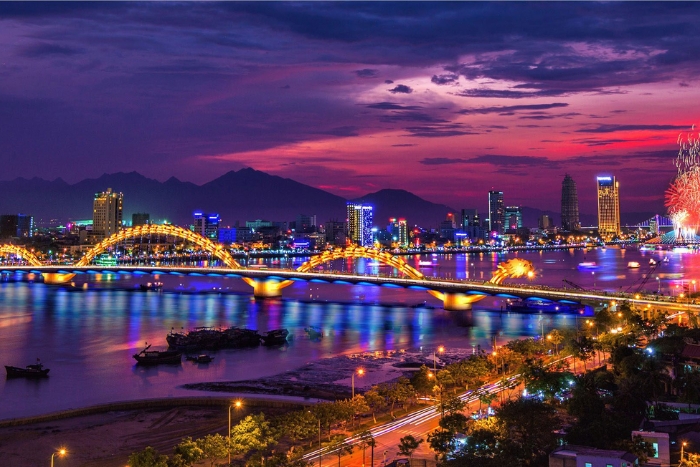
When September arrives, the pattern shifts. Clouds build over the Son Tra Peninsula, and short, heavy rains cool the city. The rainy season continues until January, softening the air and washing the hills in mist. There are days of sudden storms, but also calm breaks when sunlight returns quietly. The weather in Da Nang stays warm most of the year, around 25°C to 33°C, with only small changes between months. Rain brings freshness; heat brings energy. Each period shapes the city differently, one vivid and full of motion, the other slow and reflective, showing another side of Da Nang’s coastal life.
2. When is the best time to visit Da Nang ?
The best time to visit Da Nang Vietnam unfolds slowly through the year, shaped by the rhythm of the tropical sea. Sunshine, monsoon winds, and mountain breezes keep the weather changing just enough to give every season its own story.
| When visit Da Nang? | Da Nang weather overview |
| February – April |
|
| May – August |
|
| September – November |
|
| December – January |
|
As the months move forward, the Da Nang climate unfolds in subtle shades. Spring and summer captivate with wide blue skies, bright light, and vibrant city life, while autumn and winter slow the rhythm with misty mornings and calm seas.
- March to August, the city breathes energy, the beaches sparkle, the streets hum with life, and every sunset feels like a celebration.
- September to January, Da Nang becomes more introspective, more authentic, wrapped in gentle rain and local charm.
There is, in truth, no bad season to visit Da Nang. The choice depends on the traveler’s pace, the warmth and movement of summer, or the soft quiet of the cooler months. In every season, Da Nang keeps its balance between sea and mountains, nature and city, sunlight and serenity. In short, when is the best time to visit Da Nang Vietnam ? Spring and summer invite relaxation and sea adventures, while autumn and winter open doors to cultural depth and slow discovery. Whatever the period chosen, the city holds a quiet magic that draws visitors back again and again.
Da Nang International Airport
One Week in Danang and Hoi An
Vietnam Tours
Vietnam Travel Guide
3. Travel tips by season – What to expect in Da Nang ?
The Da Nang climate changes fast but stays kind most of the year. Sun and rain take turns, shaping a rhythm that travelers quickly get used to. A few simple habits make every stay easier, whatever the season
Dry Season (February – August)
- Days are long and bright, with temperatures between 27°C and 35°C
- Light clothes, a hat, and sunscreen help against the heat
- The sun is strongest from late morning to mid-afternoon, a good time to rest or visit shaded places such as Linh Ung Pagoda or small museums
- Early morning and sunset hours are ideal for a swim, a walk along My Khe Beach, or a ride by the Han Rive
- This is the best time to visit Da Nang Vietnam for travelers who enjoy beaches, bright skies, and lively evenings by the sea.
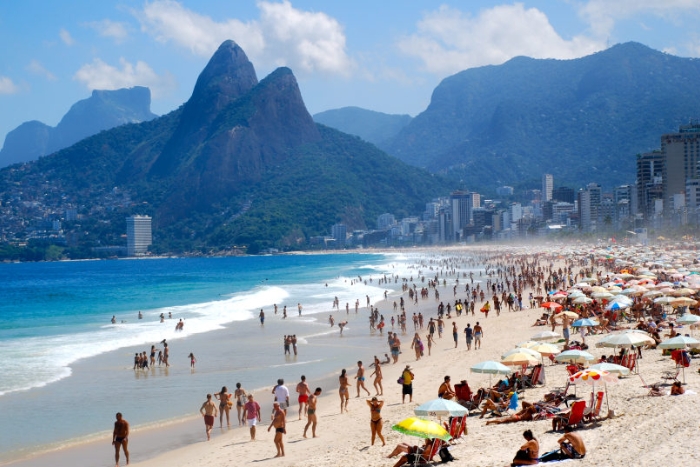
Rainy Season (September – January)
- Rain arrives more often, sometimes heavy but short. The Da Nang weather turns cooler, the air softer, remember to keep a light raincoat or umbrella on hand.
- Morning is usually the best moment for day trips before afternoon showers start.
- The city looks different in the rain — quiet streets, misty hills, and reflections on the Han River.
- From October to November in Da Nang, checking the weather forecast helps avoid tropical storms.
- Despite the humidity, this time has its charm: fewer crowds, calm beaches, and a slower rhythm that shows another side of Da Nang.
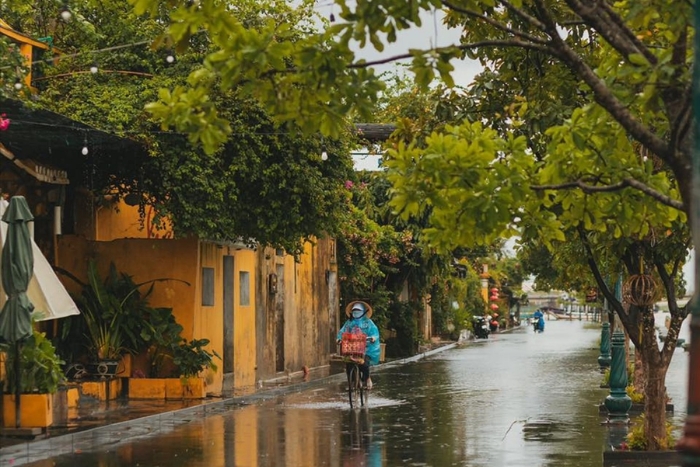
General Travel Tips
- Adjust plans to the sky: cafés, spas, and covered markets are good shelters on rainy days.
- Save sunny mornings for outdoor activities or the beach.
- Whatever the month, Da Nang remains pleasant, just follow the flow of its weather.
- Between sunlight and soft rain, the best time to visit Da Nang depends on mood more than the calendar. Warm or cool, lively or calm, the city keeps its quiet balance between mountain and sea.
Each season in Da Nang brings a different charm. Warm light in summer, calm mist in winter, bright mornings in spring, the city never feels the same twice. The Da Nang weather may shift quickly, yet it always suits those who follow its rhythm. For beach lovers, March to August shines brightest; for quiet walks and soft air, the cooler months feel just right. In the end, the best time to visit Da Nang Vietnam is simply when the heart seeks balance between sea and mountain, between light and calm. To discover more hidden corners of Central Vietnam, explore with Autour Asia, your local travel expert in the region.
Vietnam Trip 14 Days
5 days in Danang and Hoi An
3 days in Danang Golf Tour
Da Nang to Phong Nha Ke Bang 6 Days
The climate in Da Nang is tropical, hot, and sunny almost year-round. The weather in Da Nang varies between a dry season, from February to August, and a rainy season, from September to January. During the dry season, temperatures are around 28 to 34°C, perfect for beaches and outdoor activities. During the wet season, the rain cools the air and the landscapes become greener. The best time to visit Da Nang remains spring and summer, but a trip to Da Nang remains pleasant in any season, depending on your preferences.
Since the update, the Vietnam Visa Exemption has now been extended to several European countries, including Belgium, Luxembourg, and Switzerland, which have joined the list of countries benefiting from this facility. These nationals can stay up to 45 days without a visa for tourist travel. However, certain conditions apply: a valid passport, an exit ticket, and compliance with authorized durations. This measure makes planning a trip easier, whether it's deciding when to go to Da Nang, two common questions among travelers preparing their itinerary in Vietnam.
The 5 days trip Central Vietnam Essence blends nature, culture, and coastal charm. Travelers explore the ancient capital of Hue, cruise along the Perfume River, and walk through Hoi An’s lantern-lit alleys. On a trip to Da Nang, the Marble Mountains, Golden Bridge, and beaches like My Khe offer scenic contrasts. The journey also includes local food tastings and village visits that reveal daily life in the region. Each stop balances discovery and relaxation, showing why Central Vietnam is one of the country’s most captivating areas.
Related travel guide
Other similar articles
CUSTOMIZABLE BY LOCAL EXPERTS
Personalized trip at the original price!
REFUND GUARANTEE
We believe in our work and promise to give you money back.
GOOD PRICE / QUALITY
95% satisfied more than expected!
24/7 LOCAL SUPPORT
We are always available online to provide assistance at any time.
Most read articles
Autour Asia is highly recommended on
Embracing the mission of "Satisfied more than expected" and providing authentic experiences, we have received numerous recommendations on reputable travel forums:

















